Social Hackathon Solutions
On Wednesday 13 November 2024, the SLIDE project organized the hybrid Social Hackathon ‘Digital Bridges and Gaps in Society’.
11 student teams engaged in a full day thinking, collaborating and experimenting to solve digital inclusion challenges of 9 community partners from all over Europe. Our student teams have been working really hard during the social hackathon to propose innovative and creative solutions for the challenges that were set by our community partners. Each proposed solution was of great relevance and will help the community partners to improve their own activities.
CHECK OUT THEIR WORK HERE!

WINNing team
The student team Saving Vechta Tomorrow from the University of Vechta in Germany took away the first prize! The team proposed a new way to make the Online Review Treasury of the Zagreb City Libraries more attractive and usable for children and youngsters. The jury awarded their work for its creativity and sensitivity to the target audience.

special mentions
- The Dutch student team Mosaic Strategies from the Erasmus University Rotterdam was praised by the jury for its innovative proposal for collaboration between Italian community partner ASCS and local Art Schools.
- The student team Digital Guardians from the Matej Bel University in Slovakia were congratulated by the jury for their proposed website to digitally connect elderly people in care facilities with their community for the German community partner Generationen Digital Verbinden.
Saving Vechta Tomorrow – University of Vechta, Germany
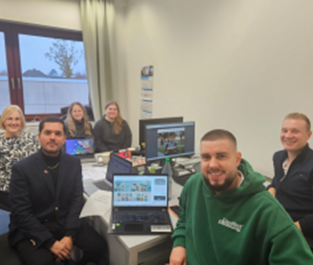
Challenge
IMPROVE THE ONLINE REVIEWS TREASURY – Zagreb City Libraries,
Croatia
Improvement of online visibility of the Online Reviews Treasury. Motivate children and youth to read and write more reviews.
Solution
Create a website that is similar to Netflix or Kibum and motivates students to write reviews.
MOSAIC Strategies – Erasmus University Rotterdam, Netherlands
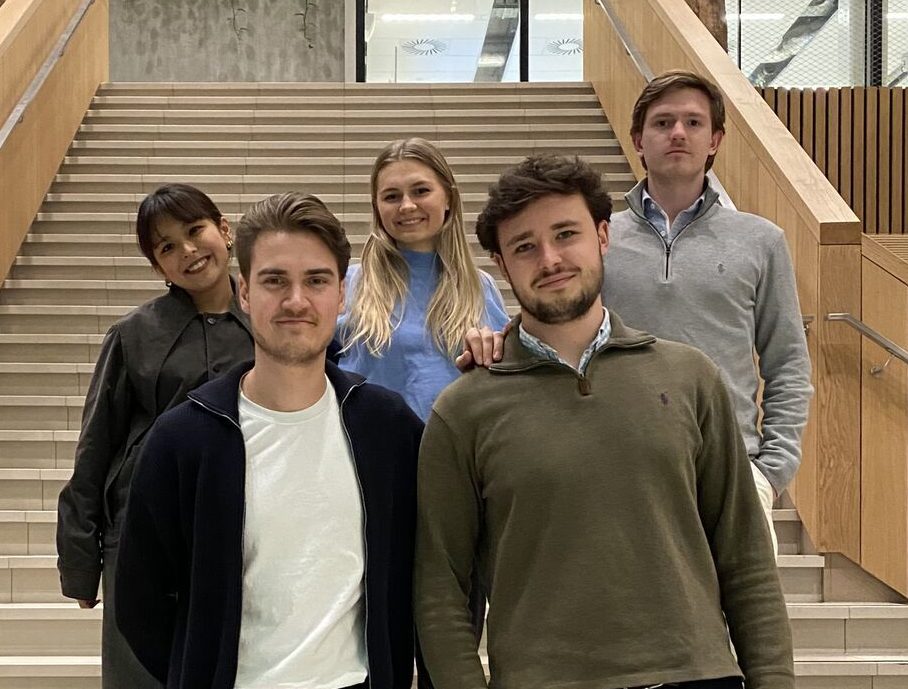
RADIO FOR THE COMMUNITY – ASCS, Italy
The challenge is to turn the radio into a tool for the community while maintaining the original goal of the house, which is to show how diversity is a source of richness, especially in the context of migration. It’s also essential to figure out how to involve volunteers more and more.
Solution
Connecting ASCS to local Art Schools to tell the story of migrants in the community.
Digital Guardians – Matej Bel University in Banská Bystrica, Slovakia
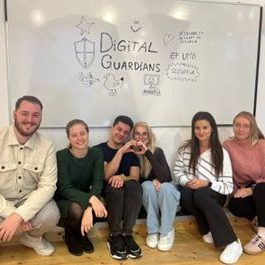
Challenge
STAY ENGAGED AT OLD AGE – Genarationen Digital Verbinden, Germany
The team is trying to solve the problem of isolation among elderly people in care facilities. The goal is to create a digital solution that enables them to stay connected with their community and participate in events without needing to physically leave the facility.
Solution
Our team is excited to introduce InteractLive, a user-friendly digital platform designed to enrich the lives of elderly residents in care facilities by bridging the gap between them and the broader community. Recognizing that isolation can deeply impact mental and emotional well-being, we developed InteractLive as a way for residents to stay actively involved in local happenings and events without needing to leave the facility. By building InteractLive, our team envisions a world where no resident feels alone, and each person feels engaged and valued. We’re proud to be working towards a future where connection and joy know no boundaries.
ChangeMakers – Matej Bel University in Banská Bystrica, Slovakia
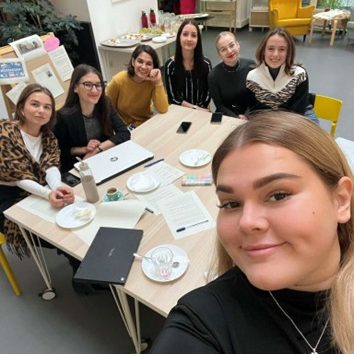
Challenge
ONLINE LESKIT – Positive Minds, Netherlands
The goal of the challenge is to achieve the same understanding as with the original version of Leskit. At the same time, develop interactive digital skills and awareness of children’s rights.
Solution
Therefore, in order to increase students’ interactivity while reading a book selected from the Leskit box, we propose to create a shared online (but also physical on paper) mindmap called “Journey of book …(book title)…”.
Read more
ImpactHERE – LUMSA, Italy
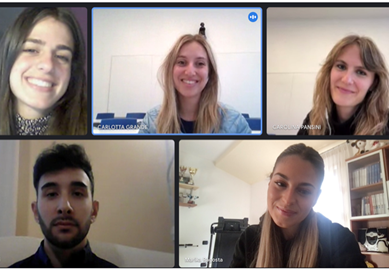
Challenge
ONLINE CONTENT FOR PUBLIC – UCSIA, Belgium
How can we create engaging digital formats that speak to both our elderly and student audience? Help us by creating a guideline on the use of engaging, interactive media accessible and attractive for all generations!
Solution
We are the ImpactHERE team from LUMSA University in Rome, working to make UCSIA events more inclusive and accessible. Our main solution is a mentorship program that connects young people with the elderly, allowing them to exchange
skills and knowledge. To reach diverse audiences, we will use tailored promotion strategies—flyers for older adults and social media for younger people, including TikTok videos and Instagram posts. Events will be hosted in hybrid
format at UCSIA’s Antwerp location and streamed online on Youtube, with interactive features and multilingual subtitles. This ensures accessibility and promotes intergenerational learning. We believe these are effective solutions
because we strongly support the continuation of in-person events while recognizing the need to leverage cutting-edge technologies like live streaming, along with podcasts and online videos.
EduGamers-National University of Science and Technology POLITEHNICA Bucharest, Romania
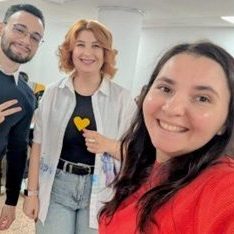
Challenge
DIGITAL COMMUNICATION CAMPAIGN – Save the Children, Italy
The challenge is focused on how to build an innovative digital communication campaign, aimed at recruiting volunteers belonging to different targets groups (e.g. university students, people of advanced age, workers, unemployed people).
Solution
The proposed solution, “Future Bridge,” is a comprehensive digital platform designed to connect volunteers with meaningful opportunities to impact youth’s lives across Italy. It addresses diverse volunteer groups, including students,
professionals, retirees, and unemployed individuals, by creating an ecosystem-based approach to volunteering.
Read more.
Vechta Visionaries – University of Vechta, Germany
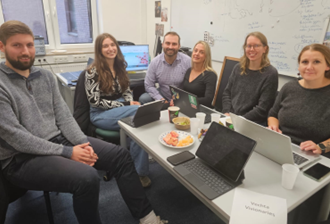
Challenge
BRIDGES FROM LOCAL TO EUROPEAN – European Dyslexia Association, Austria
The proposed solution should strengthen the digital space for networking with local stakeholders in the sense of a strategic orientation. Short-term and long-term opportunities to involve the organizations more the EDA’s activities
would be desirable. Concrete proposals should be developed here.
Solution
Online Networking events that include Seminars/Presentations on their projects or else, the country that does the presentation rotates every month so that there not a huge workload for a monthly meeting on each partner. TO find time
slots for this the EDA could use tools are doodle.
Read more.
NextGen Thinkers – LUMSA University Rome, Italy
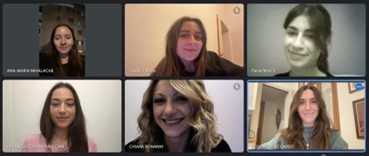
Challenge
RADIO FOR THE COMMUNITY – ASCS, Italy
The challenge is to improve online engagement and enhance digital communication to attract new volunteers, with a particular focus on young people. The goal is to transform the national volunteer database into an effective, engaging, and relevant tool throughout the year, facilitating connections between volunteers and organizations.
Solution
The solutions we propose involve developing targeted strategies to enhance engagement and the effectiveness of the national volunteer database. One of the key strategies is to strengthen the presence on social media by using modern graphics and interactive content on platforms such as Instagram and YouTube, designed to capture the attention of young people.
Additionally, we suggest creating an online community to foster a sense of belonging, loyalty, and active participation. Tools, like Instagram broadcast channels, will be used to keep volunteers informed and engaged, while the national database’s focus will be supported by social communities, establishing a direct connection between volunteers and organizations. To ensure continuous engagement and promote the value of volunteering, monthly events will be organized both online and offline. These events will help reinforce the sense of community and encourage long-term active participation.
Favorites – University College of Teacher Education Vienna, Austria
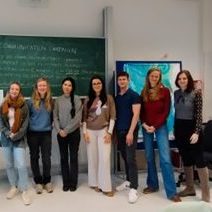
Challenge
DIGITAL COMMUNICATION CAMPAIGN – SAve the Children, Italy
How to get people involved in the project „Save the children“ with the use of digital communication campaign.
Solution
Two Solutions for two personas:
- ONE for people in retirement, specifically women between the age of 60 —75.
- TWO for University Students of the fields Educational Science, Social Work, Psychology, Pedagogy and other humanities and Social Sciences; between the ages of 20—27.
Mr. Robot – University of Zagreb, Croatia
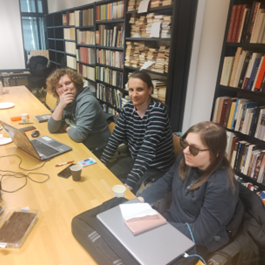
Challenge
DOBBLE GAME FOR VOLUNTEERING – Platfrom of Volunteer Centres & Organisations, Slovakia
The challenge was to create a game similar to Dobble that uses graphic symbols to introduce various types and forms of volunteering, as well as different activities through which young people and children can engage in their communities.
The symbols/images should allow adults to discuss volunteering with children and find parallels with the needs in their communities.
Solution
The solution named Vobble (Dobble for volunteering) is an interactive game based on Dobble which will introduce children to volunteer activities in which they could participate. Vobble is a simple game, easy to understand, where
players need to connect the game symbols with the associated volunteering activities. It offers additional support for further education – we created an additional manual related to the game that would raise children’s interest in
participating in activities in the community while also coming up with ideas for new ones. New knowledge and practical and social skills should be acquired through Vobble.
IDEAS – University of Zagreb, Croatia
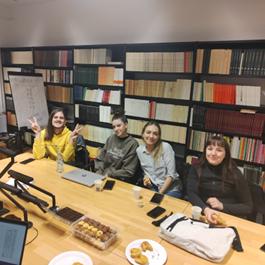
Challenge
ONLINE CONTENT FOR PUBLIC – UCSIA, Belgium
The challenge was to develop engaging digital formats that speak to both the elderly and the student audience of UCSIA. UCSIA needed students to develop guidelines for the UCSIA staff to translate their traditional onsite activities
(conferences, study days and summer schools) to an online format (ex. educational videos, podcasts) which is accessible and relevant for both university students and highly educated elderly.
Solution
The solution that we propose is to translate on site activities to an online format through video essays that are visually captivating and educating. The long form format videos will be uploaded on YouTube and Facebook accounts of
University and they will be 15-30 minutes long. Segmented chapters will be uploaded in a short form on social media that supports short form videos (for example TikTok and Instagram). These formats which were selected will appeal
to the target groups of this challenge, students and highly educated elderly. We will promote discussions by imposing questions within video essays that will motivate viewers to ponder on the main talking points of the topic and
even leave answers on the videos themselves. To make this possible, different Universities can cooperate to create necessary audiovisual content. We specifically selected this type of video format due to its success and virality
on social media platforms.

